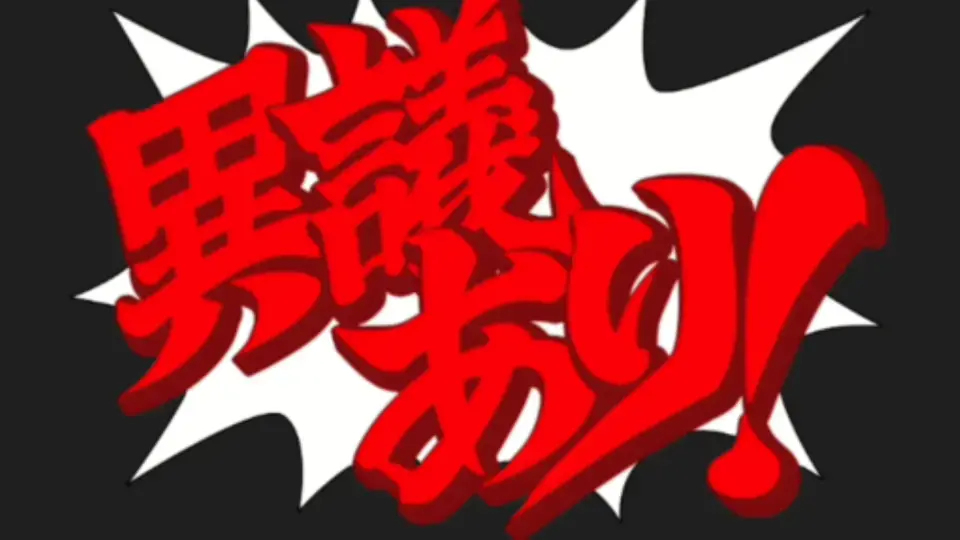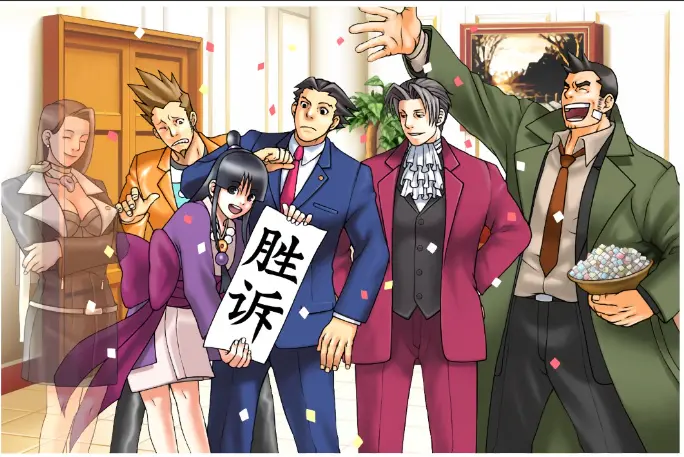The path to a turnabout lies within

Don’t approach Ace Attorney with the expectation of learning legal principles or honing your logical reasoning. Its true beauty shines through in its breathtaking twists of thought and masterfully crafted narrative rhythm!
Philosophy Over Logic
Consider the turnabout philosophy in other games:
- Death Stranding: The roles of the protective rope and the aggressive stick are reversed.
- Red Dead Redemption 2: Instead of showcasing the glory of the Wild West, it portrays its twilight and the decline of the protagonist.
- Elden Ring: The enemies don’t become progressively harder; rather, the player becomes progressively stronger.
- Honkai Impact 3rd: It’s not that Fu Hua becomes a Herrscher; it’s that the Herrscher becomes Fu Hua.
- In/Spectre: The protagonist fabricates the truth rather than uncovering it.
These examples don’t imply that the designs themselves are turnabout thinking, but rather suggest that—
“Adopting a framework of element reversal offers a uniquely intriguing perspective.”
- In a typical detective setting where criminals are caught through clues, how does one create a turnabout? By making a game where you defend the accused with evidence.
- Don’t think about what evidence can prove the criminal’s actions, but rather, consider the inevitable consequences of the criminal’s deeds.
- Don’t ask why the criminal committed the crime, but rather, what compels the criminal to do so?
To me, the brilliance of Ace Attorney lies in introducing a “philosophical perspective of reversal” rather than “logical reasoning.”
(There are certainly flaws to be found in the cases if you look for them.)
Rhythmic Expression
Using debate as its vehicle, Ace Attorney captivates players by exposing contradictions in testimonies and leveraging evidence to launch decisive attacks. The courtroom battles are punctuated with the iconic “Hold it! Objection! Take that!” sound effects, giving players the exhilarating sensation of turn-based combat.
Each character boasts unique animations (with frequent controller vibrations!), adding to the drama. The seamless blend of case progression, character performance, and perfectly timed BGM needs no further praise. The only drawback is that when multiple pieces of evidence relate to multiple testimonies in a one-to-one manner, it can sometimes lead to confusion.
The plot leans more towards suspense rather than pure logic, meaning the game’s true satisfaction lies in “recognizing the foreshadowing’s payoff” rather than “predicting the key twists.” When the finale ties everything together, that’s when true men shed tears.
A true ending is always written for those who see the story through to the end, and this is where Shu Takumi’s storytelling shines the brightest.
What I truly appreciate is the thematic crescendo in the cases throughout the first three games.
First Layer: The Lawyer’s Stance—Pursuing Innocence.
At this stage, the focus is on letting the evidence speak, fighting to the end, and never giving up on the defense.
Second Layer: Introducing the Prosecution—Pursuing Truth and Trust.
After the groundwork is laid in the first game, the lawyer appears as a towering figure. But what about the prosecution, responsible for securing convictions?
The lawyer seeks to prove innocence, while the prosecution seeks to prove guilt.
It’s through this clash over the same piece of evidence that a more objective perspective is gained.
Thus, the truth is born from the battle between guilt and innocence.
The key to the courtroom system is ensuring that both sides place their trust in it.
When both parties adhere to their convictions, truth emerges from their collision.
Third Layer: The Player’s Own Ethical Perspective.
Though the story takes place in a fictional world, ethical philosophy often shines brightest in thought experiments.
In the game, the pursuit of innocence by the player usually leads to a happy ending.
But what happens when innocence is tied to a bad ending?
This is the “contradiction” that the lawyer faces.
Innocence that wounds the heart versus guilt that comforts it—the game presents the dilemma without offering a clear answer.
(But the bonds of friendship still ignite a classic, heartwarming fire!)
The Never-Ending Tale of Visual Novels
Though Ace Attorney isn’t a galgame, the pixel art and looping BGM always remind me of the “16-bit era’s charm”—proof that even with humble technology, great stories can be born.
Even if the story has long since reached its conclusion,
A moment of persistence might still spark a miraculous flame!
As a lawyer, the more perilous the situation, the more you must smile—perhaps this is the essence of the final turnabout spirit.
Trust in your client, trust in your opponent, delve into contradictions, pursue the truth, and never give up…
All of this can begin with a single phrase—
「異議あり!」


